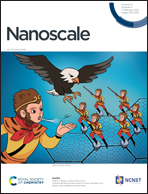Dual-functional optoelectronic memories based on ternary hybrid floating gate layers†
Abstract
Optoelectronic memories based on organic field-effect transistors (OFETs) have been extensively investigated, and great progress has been made in improving memory performance and reducing operating power consumption. Despite these achievements, optoelectronic memories reported so far have only a single storage function, such as light-assisted memory, light writing memory, or light-erasing memory, which may not meet the requirements of multi-functional storage in the future. Here, the dual-functional optoelectronic memories are demonstrated by employing ternary hybrid films as floating gate layers. Integrating the advantages of hole trapping in [6,6]-phenyl-C61-butyric acid methyl ester (PCBM) and photoinduced electron trapping in CsPbBr3 quantum dots (QDs), the dual-functional storages including electric programming holes and light programming electrons can be realized in one device. Owing to the complementary charge trapping advantages in CsPbBr3 QDs and PCBM, the devices also show a short light erasing time of 0.05 s and low erasing gate bias within −35 V. In addition, the devices exhibit decent endurance for 500 continuous light programming-reading–electric programming-reading cycling tests and admirable electron and hole retention time of 10 000 s with negligible charge leakage. This study may offer a feasible path for the development of new-generation memory.



 Please wait while we load your content...
Please wait while we load your content...